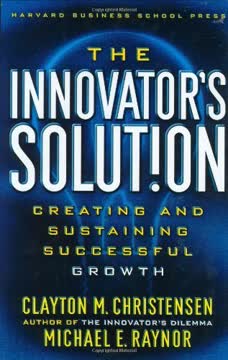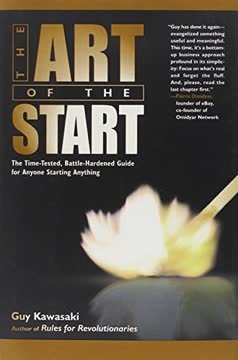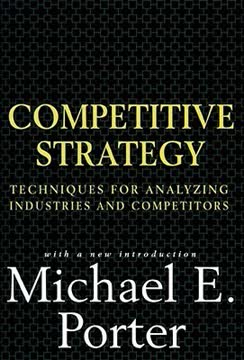重点摘要
1. 免费经济学:当边际成本接近零
因此,在线世界的年净通缩率接近50%,也就是说,今天YouTube播放视频的成本在一年后将减少一半。
数字革命极大地降低了信息产品的生产和分发的边际成本。这一现象由三大关键技术趋势推动:
- 摩尔定律:处理能力每18个月翻一番
- 存储成本迅速下降:容量每年翻一番
- 带宽增加:速度每9个月翻一番
这些趋势结合在一起,形成了技术进步的“三重奏”,使得数字产品的生产和分发成本越来越低。因此,许多数字产品和服务可以免费提供,企业通过其他方式实现盈利。
- 免费数字产品的例子:
- 电子邮件服务(Gmail, Outlook)
- 社交媒体平台(Facebook, Twitter)
- 视频流媒体(YouTube)
- 在线百科全书(Wikipedia)
2. 免费作为强大的营销工具和商业模式
记住史蒂夫·乔布斯的断言,如果你选择花时间处理文件交易中所有混乱的元数据,你甚至连最低工资都没赚到?
免费增值模式已成为数字经济中的主导策略。这种模式提供产品或服务的基本版本免费,同时对高级功能或增强功能收费。
- 免费增值模式的关键方面:
- 通过免费产品吸引大量用户
- 将一小部分用户转化为付费客户
- 依靠低边际成本支持免费用户
成功的免费增值业务示例:
- Spotify(音乐流媒体)
- Dropbox(云存储)
- LinkedIn(职业社交)
免费增值模式允许公司接触大量受众并建立品牌知名度,同时通过那些在高级功能中找到额外价值的用户产生收入。
3. 免费的心理学:为什么它对消费者有不可抗拒的吸引力
“零不仅仅是另一个价格,”他写道。“零是一个情感的热按钮——一种非理性的兴奋源。”
免费的力量在于它能够引发消费者强烈的情感和心理反应。行为经济学家如丹·艾瑞里(Dan Ariely)的研究表明,人们在面对免费优惠时会表现出非理性行为。
- 免费的关键心理效应:
- 消除了成本效益分析的需要
- 减少了损失或后悔的恐惧
- 创造了丰富和慷慨的感觉
这些心理因素常常导致消费者选择免费选项,即使付费替代品可能提供更好的价值。企业可以通过战略性地使用免费优惠来吸引客户并推动相关产品或服务的销售。
4. 数字丰富性及其创造的新稀缺性
“在一个信息丰富的世界里,信息的丰富意味着其他东西的稀缺:信息消耗的东西。信息消耗的东西显而易见:它消耗了接收者的注意力。”
丰富的悖论在于它创造了新的稀缺形式。在数字时代,信息和许多数字产品变得丰富,但这导致了其他领域的稀缺:
- 数字时代的新稀缺性:
- 注意力:信息过载,使得捕捉和保持用户注意力变得有价值
- 信任:随着信息变得丰富,可信来源和策展人变得重要
- 时间:选择和信息的丰富使时间成为宝贵的商品
- 意义:从大量数据中提取见解的能力变得至关重要
企业可以通过解决这些新稀缺性来创造价值,例如:
- 开发过滤和策展信息的工具
- 建立可信品牌和社区
- 提供节省时间的服务和产品
- 从原始数据中提供分析和意义
5. 与免费竞争:企业的策略
与免费竞争的方法是超越丰富性,找到相邻的稀缺性。
差异化和增值服务是与免费替代品竞争的关键策略。企业必须专注于提供独特或优于免费选项的东西。
与免费竞争的策略:
- 优质或用户体验
- 个性化和定制化
- 互补产品或服务
- 建立强大的品牌忠诚度
- 提供便利或节省时间的功能
成功与免费竞争的例子:
- 瓶装水与自来水竞争
- 高级电子邮件服务与免费网络邮件
- 付费流媒体服务(Netflix, HBO)与免费视频平台
通过专注于创造超越免费替代品的附加价值,企业可以证明其产品和服务的收费合理性。
6. 礼物经济和非货币市场
自然在寻找更好的生活中浪费了生命。
数字礼物经济在传统市场的旁边蓬勃发展,创造了新的价值交换形式。这个经济体由声誉、注意力和对社区的贡献等非货币动机驱动。
数字礼物经济的关键方面:
- 开源软件开发
- 用户生成内容(维基、论坛、评论)
- 创作共用许可
这些非货币市场通常补充和增强传统经济活动,通过:
- 促进创新和合作
- 建立社区和网络
- 创建有价值的资源和知识库
企业可以通过以下方式利用礼物经济:
- 支持开源项目
- 鼓励用户生成内容
- 建立知识共享和合作的平台
7. 免费对创新和知识产权的影响
在专利中已经有了免费的地方——它在十七年后生效。
免费与知识产权的紧张关系正在重塑创新和知识产权权利。虽然有些人认为免费通过减少激励破坏了创新,但另一些人认为它实际上可以促进创造力和进步。
支持免费促进创新的论点:
- 鼓励快速迭代和改进
- 使更多人参与创新
- 促进知识和思想的传播
反对免费在创新中的论点:
- 减少创作者的财务激励
- 可能导致研发投资不足
- 可能威胁传统商业模式
挑战在于找到一种平衡,既保护创作者的权利,又营造有利于创新和进步的环境。
8. 免费的环境和社会成本
我们的页面不仅昂贵,而且不可更改。一旦印刷机运行,我们的错误和判断失误将被永远保存(或至少直到它们被回收)。
免费的隐藏成本可能对环境和社会产生重大影响。虽然数字免费由于缺乏物理生产看起来对环境友好,但它仍然可能有负面外部性。
免费的潜在负面影响:
- 数据中心和设备生产的环境成本
- 注意力经济的社会成本(如对免费社交媒体的成瘾)
- 传统行业的经济破坏
解决这些挑战需要:
- 将真实成本纳入定价模型
- 开发更可持续的技术
- 平衡免费的好处与其潜在的缺点
9. 数字经济世界中免费的未来
突然间,一个多世纪前作为笑话发明的理论经济模型成为了在线定价的法律。
免费的演变将继续塑造数字经济。随着技术进步和新商业模式的出现,免费的概念可能变得更加普遍和复杂。
免费的未来发展潜力:
- 增加数据作为货币的使用
- 免费增值模式的演变
- 区块链和加密货币在免费优惠中的整合
- 虚拟和增强现实中新形式的价值交换
企业和消费者都需要适应这些变化,找到在日益免费的数字环境中创造和捕捉价值的新方法。
最后更新日期:
FAQ
What's Free: The Future of a Radical Price by Chris Anderson about?
- Exploration of "Free" Concept: The book examines how the concept of "free" has evolved from a marketing tactic to a core economic model in the digital age.
- Impact on Business Models: It discusses how technological advancements have enabled businesses to offer products and services at little to no cost.
- Cultural and Economic Implications: Anderson explores the societal and psychological effects of free, reshaping consumer behavior and business strategies.
Why should I read Free: The Future of a Radical Price by Chris Anderson?
- Understanding Modern Economics: The book provides insights into new economic models emerging in the digital landscape, crucial for business and technology enthusiasts.
- Real-World Examples: Anderson uses case studies like Google and Craigslist to show how companies leverage free to disrupt traditional markets.
- Future-Proofing Knowledge: Understanding the principles in the book helps readers navigate the rapidly changing economic environment influenced by digital technologies.
What are the key takeaways of Free: The Future of a Radical Price by Chris Anderson?
- Free as a Business Model: "Free" is not just a marketing strategy but a viable business model that can lead to significant market share and customer loyalty.
- Psychology of Free: Consumers perceive free products differently, often associating them with lower quality unless they have always been free.
- Cross-Subsidization: The book explains models where one product is free to drive sales of another, highlighting the importance of understanding these dynamics.
What are the best quotes from Free: The Future of a Radical Price by Chris Anderson and what do they mean?
- "There’s no such thing as a free lunch.": While something may be offered for free, there are often hidden costs or trade-offs involved.
- "Information wants to be free.": Reflects the dual nature of information in the digital age, being abundant and easily shared yet valuable.
- "You can make money giving things away.": Highlights the paradox where businesses thrive by offering free products, relying on alternative revenue streams.
How does Chris Anderson define "free" in Free: The Future of a Radical Price?
- Two Meanings of Free: Anderson distinguishes between "free as in freedom" and "free as in zero cost," emphasizing the latter in digital economics.
- Cultural Context: The perception of free has evolved, with consumers often expecting digital products to be free.
- Psychological Implications: Free affects consumer behavior, leading to increased usage and engagement when products are offered at no cost.
What is "freeconomics" as discussed in Free: The Future of a Radical Price by Chris Anderson?
- Definition of Freeconomics: Refers to economic principles and business models arising from free products and services, especially in the digital realm.
- Market Dynamics: Disrupts traditional pricing models, leading to new revenue generation methods like advertising and premium services.
- Examples of Freeconomics: Companies like Google and Facebook offer free services while monetizing through advertising.
How does Free: The Future of a Radical Price by Chris Anderson illustrate the impact of free on traditional industries?
- Case Studies: Uses examples like the decline of print newspapers due to free online content to show disruption of traditional models.
- Market Redistribution: Free can redistribute wealth within industries, benefiting consumers while challenging established companies.
- Long-Term Effects: While initially harmful to existing businesses, free can create new opportunities and markets benefiting society.
What are the psychological effects of free on consumers according to Free: The Future of a Radical Price by Chris Anderson?
- Perception of Value: Consumers often perceive free products as lower quality, especially if they were previously paid products.
- Increased Engagement: Free offerings lead to higher engagement and usage rates, removing barriers to entry.
- Mental Transaction Costs: Free eliminates cognitive effort required for purchasing decisions, encouraging participation.
How does Chris Anderson explain the concept of cross-subsidization in Free: The Future of a Radical Price?
- Definition of Cross-Subsidization: Occurs when one product is free or low-cost to drive sales of another profitable product.
- Examples in Business: Includes models like the razor-and-blades, where the razor is cheap to encourage blade purchases.
- Strategic Importance: Understanding cross-subsidization is crucial for developing effective business models in the age of free.
What role does technology play in the concept of free according to Free: The Future of a Radical Price by Chris Anderson?
- Driving Down Costs: Advancements in technology have made it possible to offer products and services for free.
- Creating New Markets: Technology enables new markets and business models leveraging free, transforming industries.
- Future Implications: As technology evolves, free will become more integral to business strategies and consumer behavior.
How does Free: The Future of a Radical Price by Chris Anderson address the future of free in the economy?
- Ongoing Evolution: Free will continue to evolve, influencing business operations and consumer interactions.
- Potential Challenges: Risks include monopolies forming around free services, limiting competition and innovation.
- Opportunities for Growth: Embracing free principles can lead to new opportunities for growth and innovation in the economy.
How does Free: The Future of a Radical Price by Chris Anderson address the issue of piracy?
- Piracy as Marketing: Suggests piracy can increase visibility and audience reach for creators.
- Changing Attitudes: Attitudes toward piracy are evolving, especially among younger generations.
- Long-Term Strategies: Creators should leverage free distribution benefits while finding monetization methods.
评论
《免费:激进价格的未来》探讨了数字时代“免费”这一概念,讨论了围绕免费提供产品或服务的各种商业模式和策略。虽然一些读者认为这本书富有洞察力且发人深省,但也有读者觉得内容重复且过于乐观。书中分析了历史上免费提供产品的例子及其对企业的影响,以及消费者对免费产品反应背后的心理。尽管评价褒贬不一,许多读者仍然欣赏安德森对数字时代经济格局变化的分析。
Similar Books















